Vintages - Signature Wines from Seven Key New World Regions
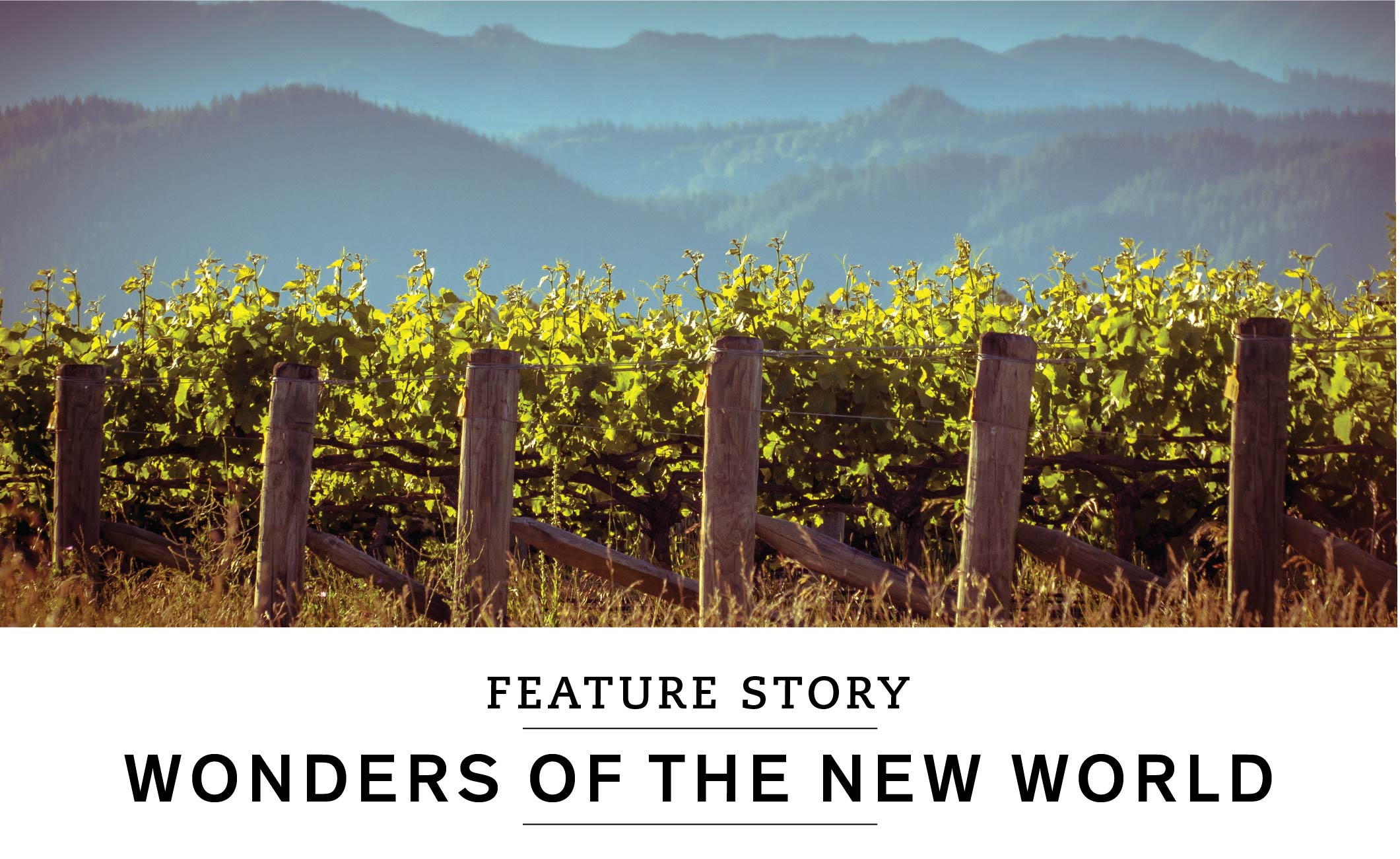
Signature Wines from Seven Key New World regions
(5 min. read)
Whether you’re new to wine or a seasoned pro dashing into the store to grab something suitable for dinner tonight, understanding signature styles – think California Cabernet, New Zealand Sauvignon Blanc, Ontario Riesling or Aussie Shiraz – will help you make champion choices.
In Europe, wine regions and styles have long been defined. Through centuries of experimentation, refinement, specialization and legislation, classic regions put their stamp on their superstar varietals, and vice versa. As winemaking expanded into the New World, the abundance of diverse and favourable soils, topographies and climates, combined with the freedom to experiment without regulation, meant that winemakers could grow a wide variety of grapes in a given area, often successfully ripening cool- and warm-climate varietals in close proximity. But even so, some celebrities emerged; grapes so perfectly suited to a particular region’s terroir that they consistently produced wines at a level that set them apart.
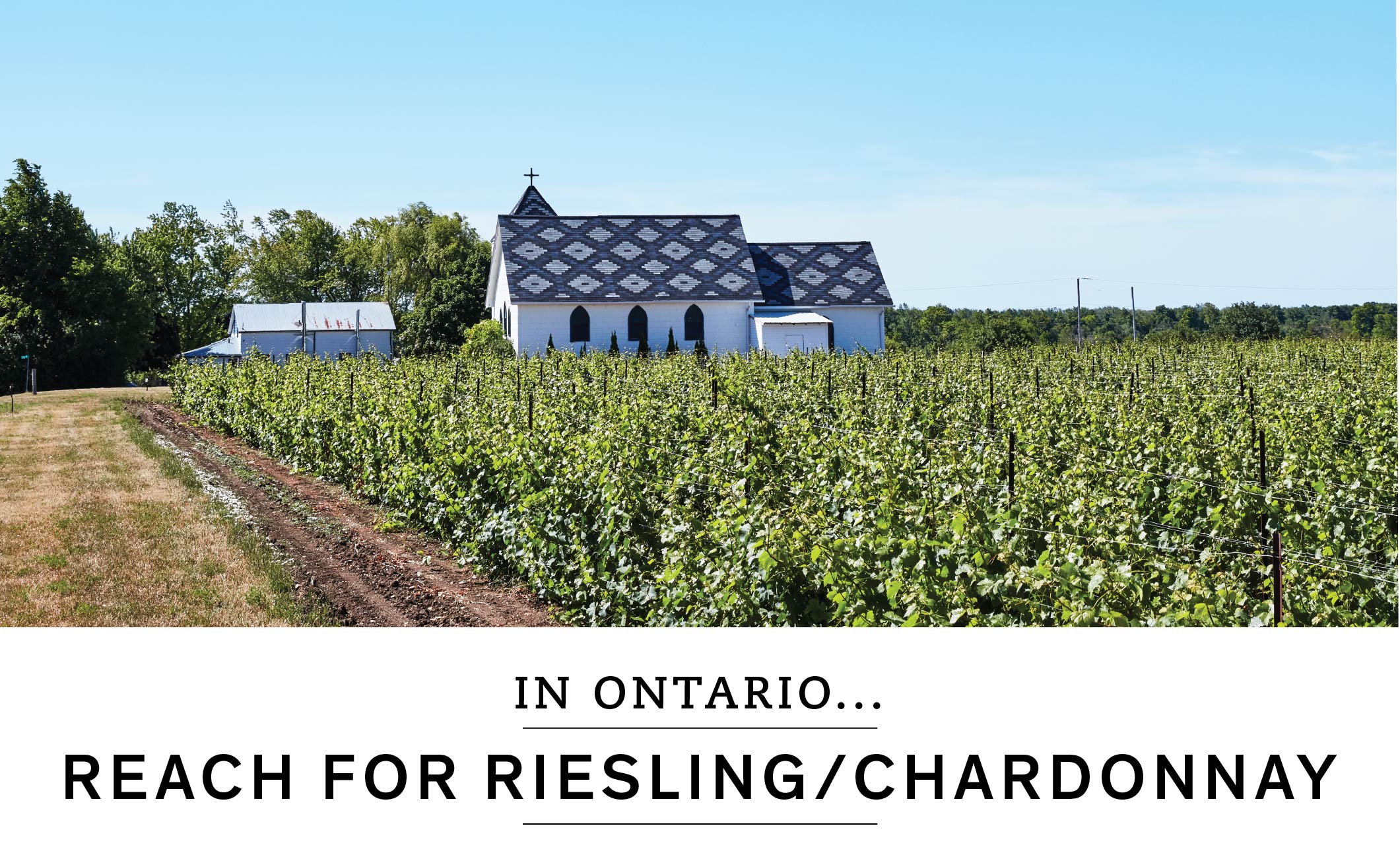
MEASURING UP
Bright and racy, Ontario Riesling spans the sweetness spectrum from dry to Icewine, with peach and citrus aromas and flavours being prevalent. Chardonnay can express a broad range of flavours, depending on factors such as the use of oak, malolactic fermentation and lees ageing. Unifying qualities are the apple, pear and tropical fruit notes found in Ontario Chard. Both grapes deliver impressive minerality.
LOCATION, LOCATION, LOCATION
The soils of Niagara and Prince Edward County, though varied, contain large percentages of limestone, which is ideally suited to producing high-quality Chardonnay and Riesling.
FAIR-WEATHER FRIENDS
Winemakers in both Niagara and PEC owe much to Lake Ontario. This large, deep body of water moderates temperatures, warming sites through the winters and cooling them in the summer, allowing cool-loving varieties to thrive.
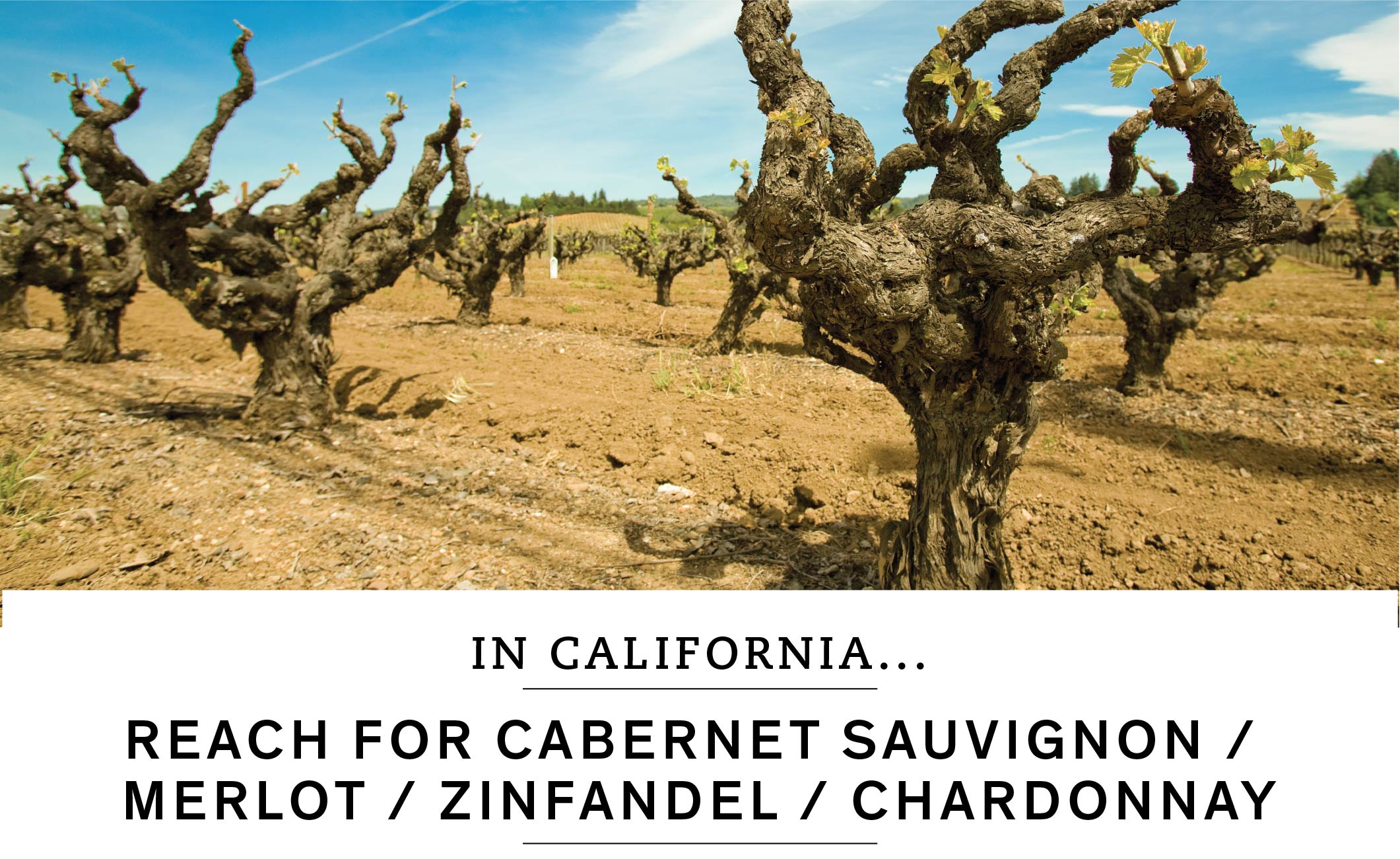
MEASURING UP
Ripe fruit flavours are the cornerstone of California wine, across varietals. Cabernet Sauvignon here is powerful and structured, with ripe dark fruit, mineral and oak. Those from Napa suggest a pure cassis quality that is unmatched. Merlot from the Sunshine State delivers ripe blackberry and plum, with velvety tannins. California’s heritage grape, Zinfandel, has impressive red berry with herbs, bramble and spice. Chardonnay from California is typically full-bodied and buttery, with tropical fruit and vanilla. Unoaked versions are also produced. Both expressions share a zesty, fresh acidity.
LOCATION, LOCATION, LOCATION
Regions near the Pacific Ocean experience morning mists and fog that help to cool the grapes, retaining balance, freshness and finesse in the wines. These areas can grow sophisticated Chardonnay. In Napa, these conditions produce ripe Cabernet and Merlot whose power is balanced by fresh acidity. Other areas in California are hot and dry enough for grapes such as Zinfandel to flourish.
FAIR-WEATHER FRIENDS
Vast and varied, California experiences a wide range of weather, but its wine regions do share some common traits. One is definitely the sun, essential for grape ripening and in no short supply across the state. Another commonality is the lack of rain during the ripening period, which helps encourage California’s concentrated, ripe fruit flavours.
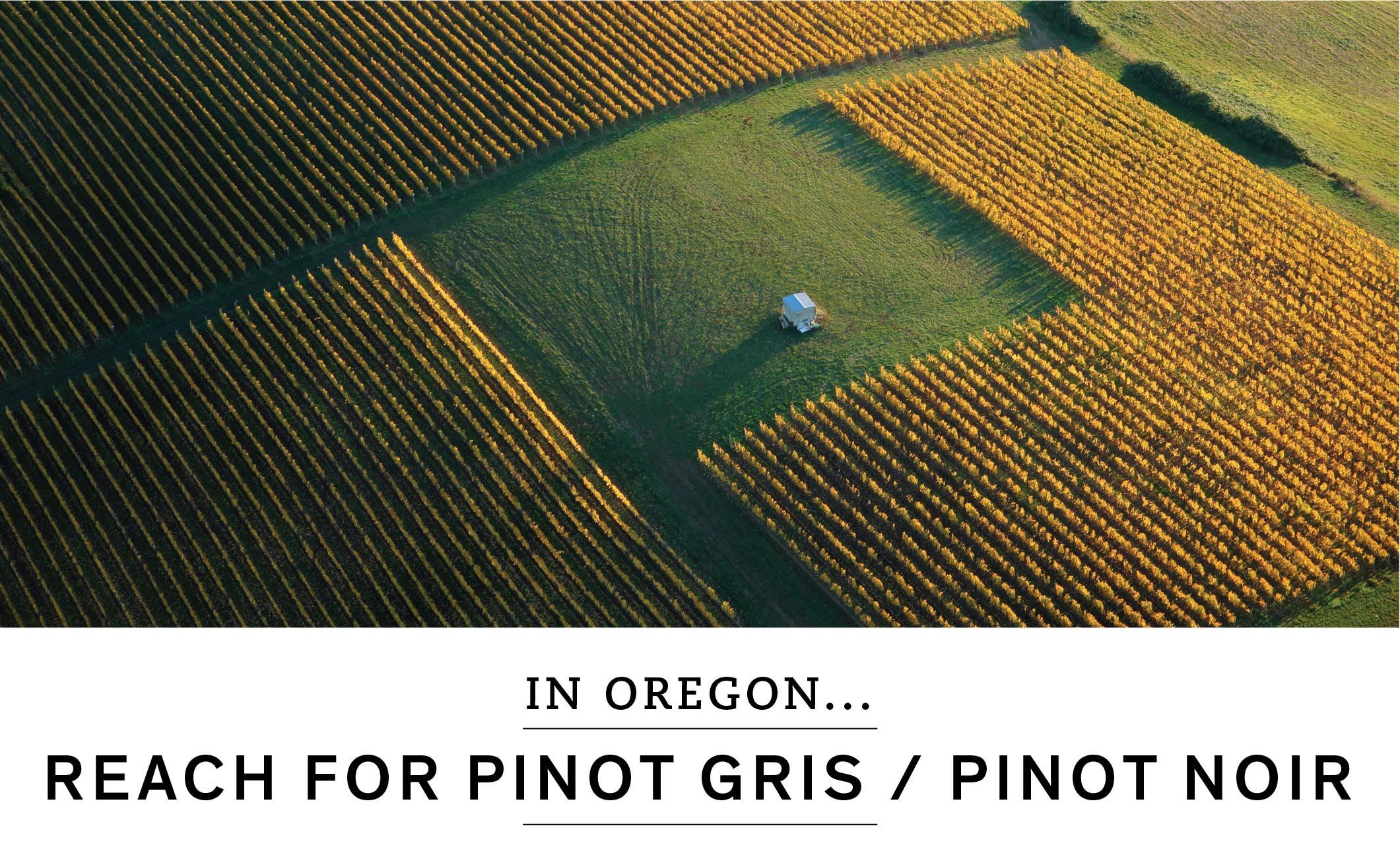
MEASURING UP
Oregon’s flagship white, Pinot Gris offers lively aromas and flavours of pear, apple and melon and stylistically tends to fall between the extremes of the full-bodied, rich versions from Alsace and the light, delicate Pinot Grigios of Italy. Oregon Pinot Noirs tend to be leaner and “tighter” than those from California, expressing an earthy complexity and elegance that reflect a Burgundian character.
LOCATION, LOCATION, LOCATION
Oregon’s complex soils and topography are the result of the violent volcanic activity and great glacial Missoula floods of prehistory and are a boon for Pinot Noir’s legendary ability to reflect even the most subtle variations in terroir. Hillside plantings on south-facing slopes allow the grapes to soak up all available sunlight as they ripen slowly over the long growing season. This slow ripening is a key requirement for premium-quality Pinot Gris.
FAIR-WEATHER FRIENDS
Situated to the west of the Cascade Mountains and subject to the direct influence of the Pacific Ocean, Oregon experiences unpredictable weather. But the predominantly cool temperatures, especially at harvest time, are perfectly suited to both Pinot Gris and Pinot Noir.
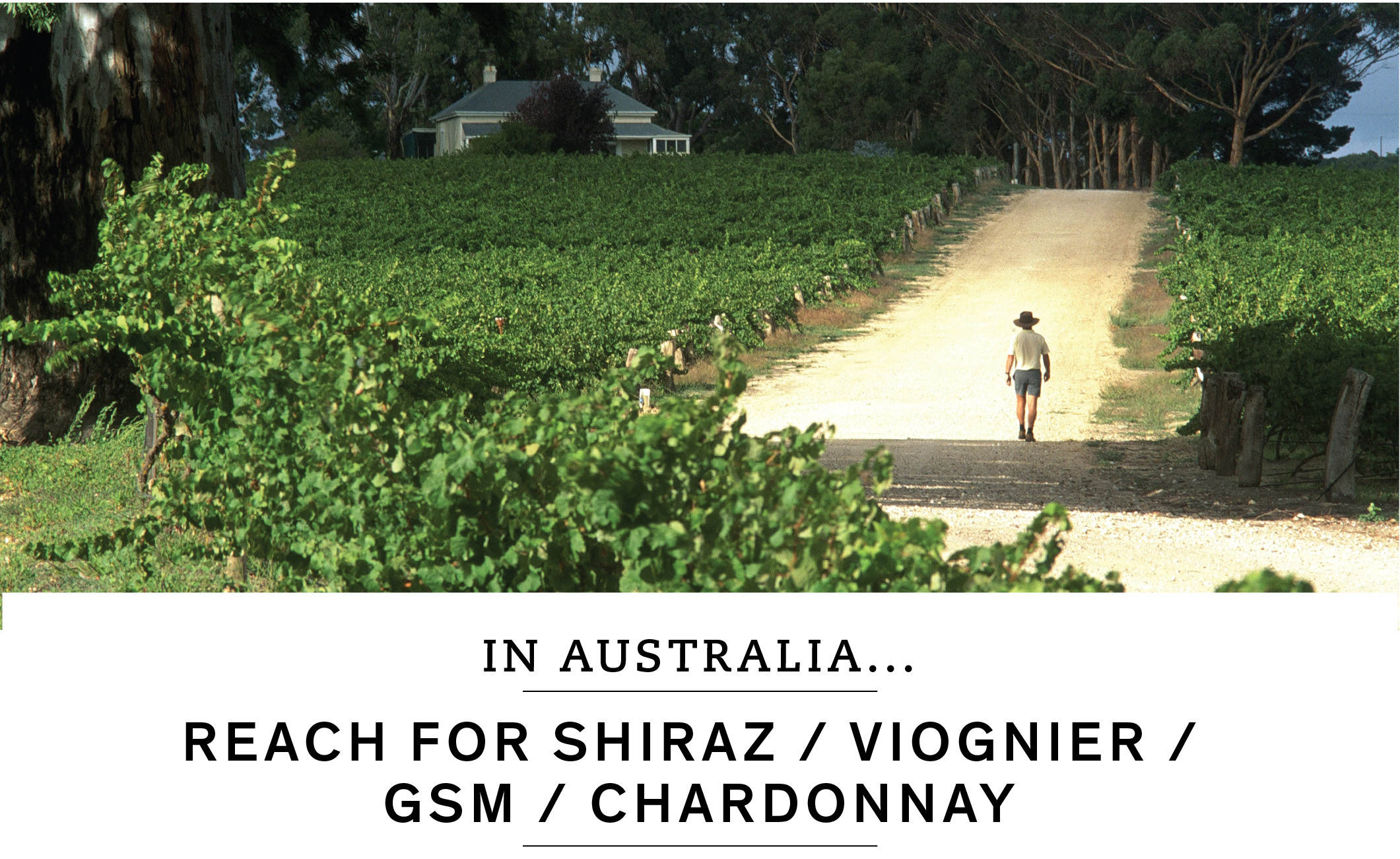
MEASURING UP
Barossa Valley Shirazes are rich, with dark fruit, roasted fruit and pepper spice. The addition of the white grape Viognier, as in our example from South Australia, enhances the wine’s floral characteristics. The famous Rhône blend Grenache/Shiraz/ Mourvèdre (a.k.a. Mataro) takes on a forceful, complex character in Australia, suggesting red and dark fruit, earth, herbs and spice. Aussie Chardonnays are crisp and fresh, with melon, citrus and tropical fruit. They typically have some oak influence, though unoaked expressions have become increasingly popular.
LOCATION, LOCATION, LOCATION
Australia’s wine regions are situated, in nearly all cases, in relatively close proximity to the coast, the interior being far too hot and utterly unsuitable for winemaking. Growing areas in Australia rely on the influence of the ocean to moderate temperatures.
FAIR-WEATHER FRIENDS
The hot, dry Barossa Valley is the most famous area in the phylloxera-free South Australia region, and many of the world’s oldest Grenache vines are found here. These old bush vines grow in a style known as gobelet: an ancient vine-training technique that eschews stakes or wires. The plentiful leaf canopy of the freestanding plants shades the grapes, which is ideal for hot, dry growing areas. Though the Clare Valley is north of the Barossa, cold nights and cool breezes make it an ideal area for Riesling and Chardonnay. Clare Valley Shirazes and Cabernets are profoundly aromatic.
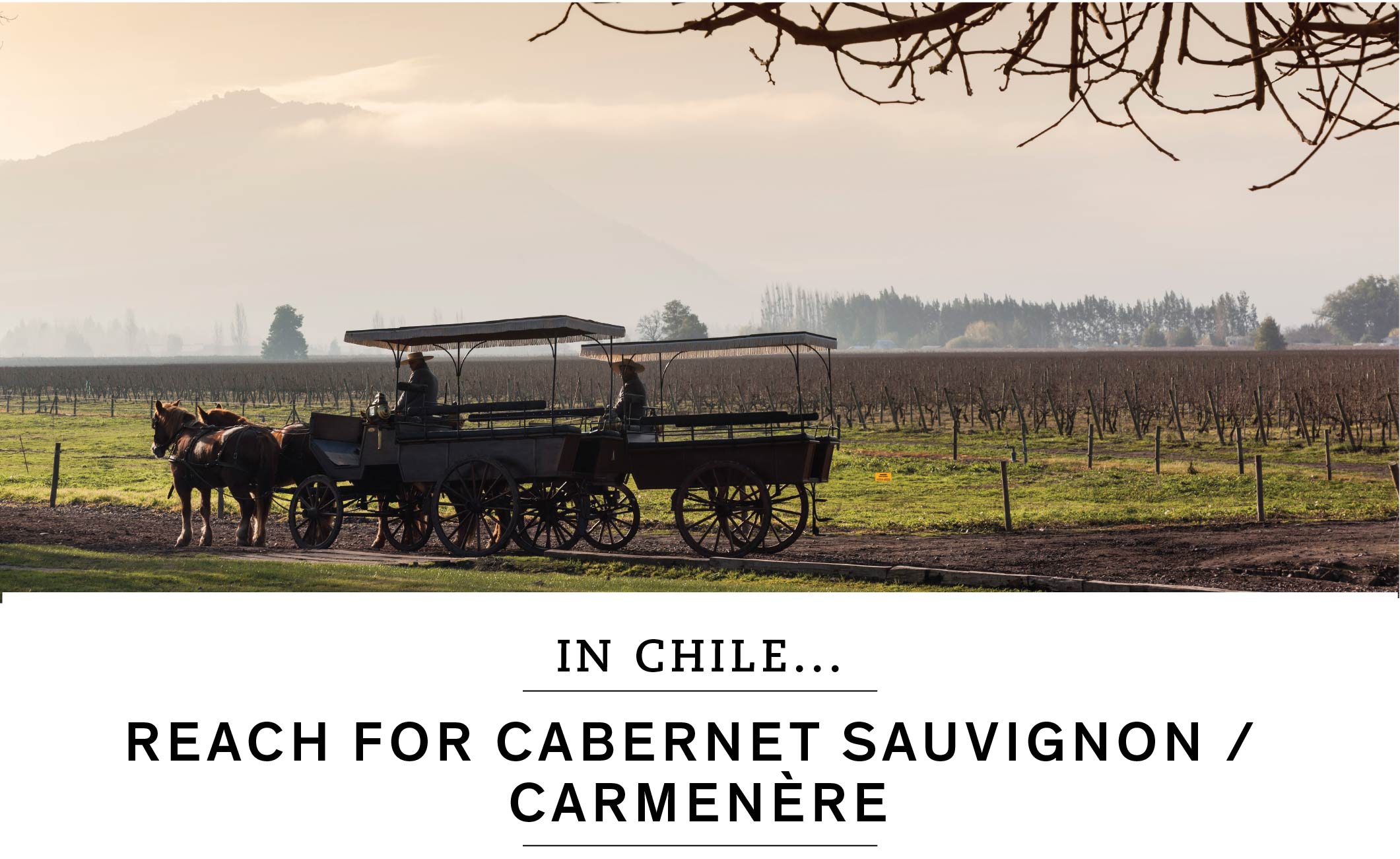
MEASURING UP
Warmer sites, such as those found in Colchagua, encourage intense, forward ripe fruit and soft tannins in Chile’s most planted grape, Cabernet. The late-ripening, warmth-loving Carmenère is Chile’s signature red, and it features black fruit, herbs, spice and velvety tannins. Both wines often appear together in blends.
LOCATION, LOCATION, LOCATION
Long and narrow, Chile is sandwiched between the Andes and the Pacific Ocean. Its growing areas are influenced by both cool mountain winds and cool ocean breezes. Though there are regional variations within Chile’s valleys, its unique geographical influences permit long growing seasons, resulting in ripe, balanced wines.
FAIR-WEATHER FRIENDS
The Humboldt Current flows up along the coast of Chile from the Antarctic, bringing cold air and cooling breezes and fogs into the valleys. As one moves farther inland, growing areas become warmer, until altitude and mountain winds again introduce cooler temperatures. In these regions, the diurnal variation (i.e., the difference between day and night temperatures) can be as much as 20°C.
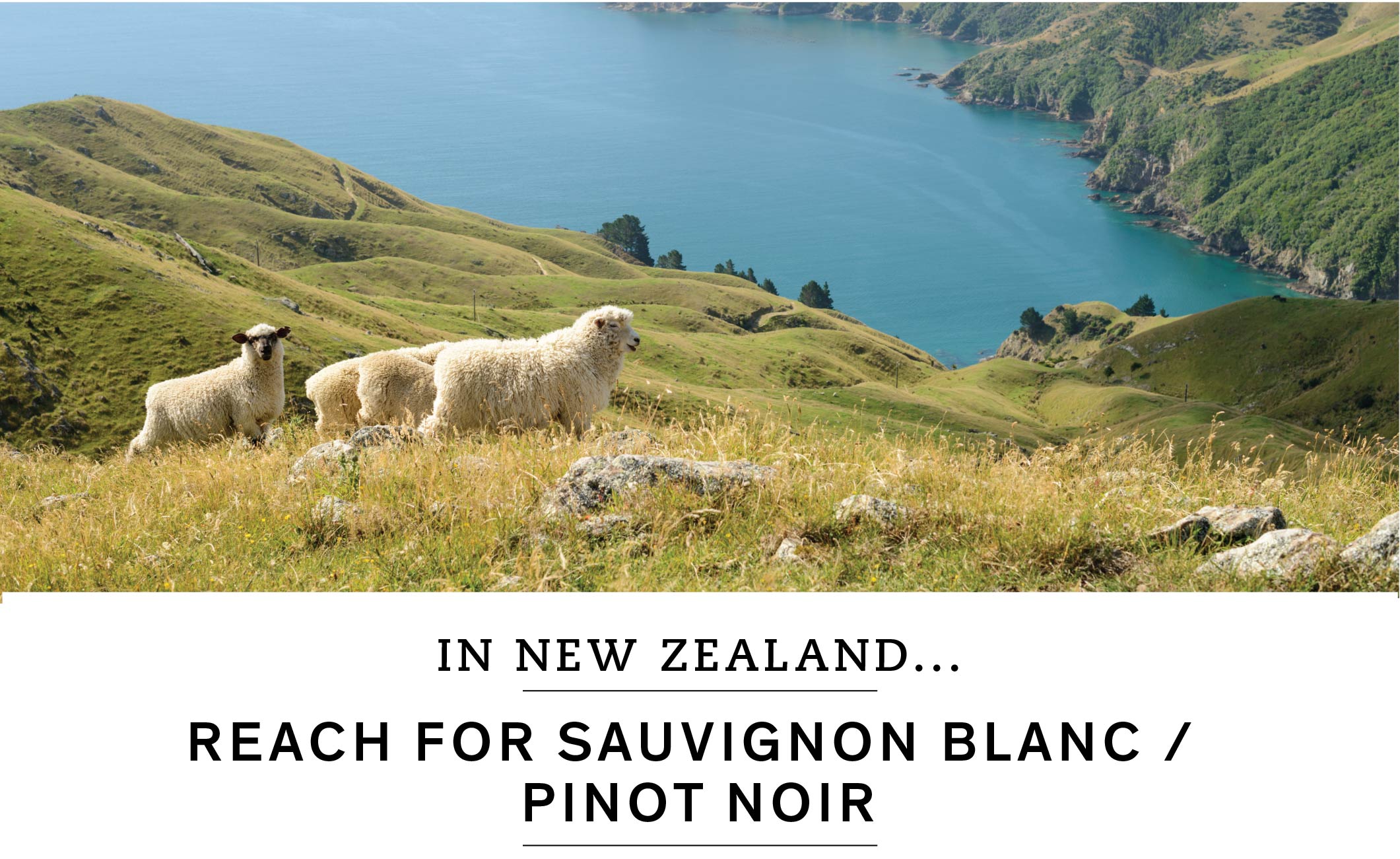
MEASURING UP
The crisp, intense gooseberry, asparagus, herbs, tropical fruit, grass and minerality of New Zealand Sauvignon Blanc have made it the benchmark New World style. Excellent aromatics, freshness and concentrated red fruit are typical traits of NZ Pinot Noir.
LOCATION, LOCATION, LOCATION
Marlborough has quite diverse soil types including glacial deposits, gravel, clay, loam and wind-blown loess. This variety allows winemakers to create highly nuanced expressions by blending the distinct attributes of multiple sites into their wines.
FAIR-WEATHER FRIENDS
Ocean influence, along with abundant sunshine and cool evenings, create a long growing season in Marlborough that gives both Sauvignon Blanc and Pinot Noir the time to ripen fully and evenly, developing their characteristic intense flavours while retaining balance and crispness.
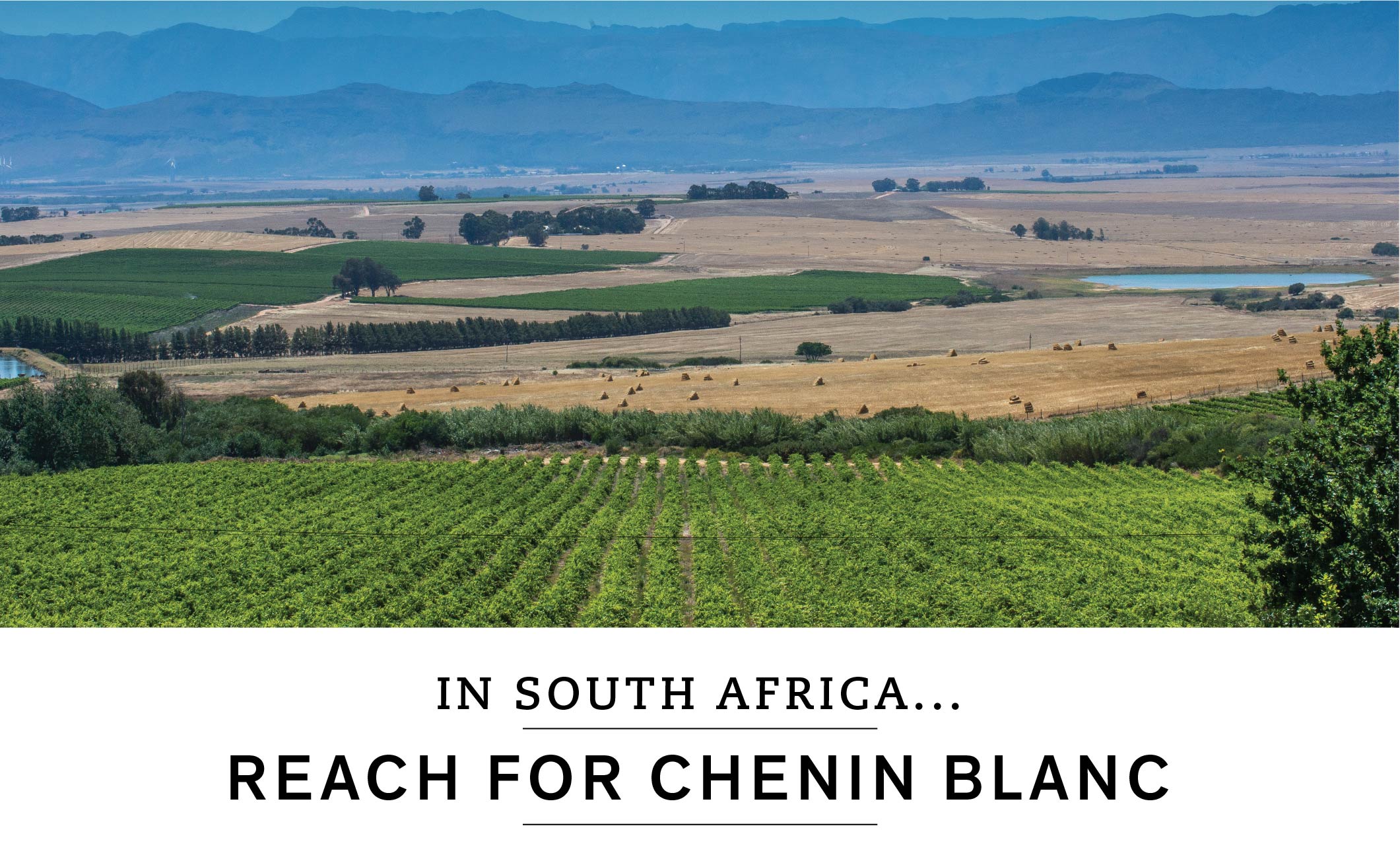
MEASURING UP
Capable of producing dry, sweet and sparkling wines, South African Chenin Blanc can express apple, melon, tropical fruit and citrus, with lifted floral tones and herb and mineral notes. Some versions see some oak treatment.
LOCATION, LOCATION, LOCATION
In the Swartland region, vines planted on rolling hills and gentle slopes take advantage of variations in temperature that allow Chenin, Sauvignon Blanc and Chardonnay to be grown in close proximity to Cabernet and Shiraz. Old-vine plantings of Chenin are bush-trained to give the grapes additional protection from the heat.
FAIR-WEATHER FRIENDS
The Antarctic Benguela Current provides cooling fogs and breezes that can reach quite far inland in places. This current is also responsible for the famous Cape Doctor: the winds that keep the vineyards of the Western Cape free of pests, fungus and pollution.
Get our Latest News!
Be the first to hear about new arrivals, special offers, virtual events and more.
Get to Know Us!
Everything we are in a nutshell.

